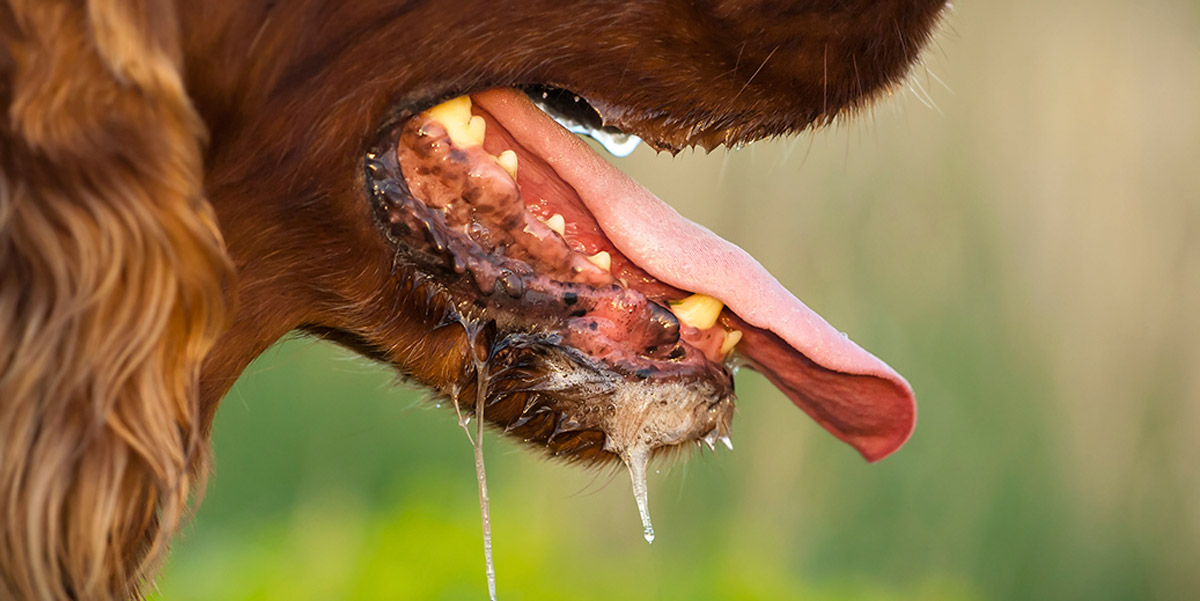Worldwide rabies risk reminder
A reminder for travellers of the global risk of rabies

- This updates the news item of 10 January 2022
Rabies is present in more than 150 countries and territories on all continents, apart from Antarctica [1].
Tens of thousands of people die each year from rabies, mainly in Asia and Africa [1]. Of those bitten by suspect rabid animals, 40% are children under 15 years of age. The World Health Organization estimates that dogs are the main source of human rabies deaths, causing up to 99% of all human rabies transmissions [1]. However, rabies can spread to humans in saliva from any infected domestic or wild animal, for example rabies was recently detected in seals in South Africa [1,2].
During 2019, a total of four fatal imported rabies cases were reported in European travellers. In May 2019, Norway confirmed one rabies-related death following infection in the Philippines. In December 2019, three further fatal rabies cases were confirmed: one in Latvia in a traveller returning from India, one in Spain following infection in Morocco and one in Italy in a traveller bitten by a dog in Tanzania [3].
There are other rabies-related viruses (lyssaviruses) that occur in bats, and these can cause rabies in humans [4]. In the Americas, bats are a major source of human rabies deaths [1]; in the US between 1960 and 2018, 70% of people who become infected had exposure to a rabid bat [5]. Bat lyssavirus is also an emerging threat in Australia and in western Europe [1].
Bat lyssavirus has been detected in animals in parts of Europe [6]. In 2019, the first human death from European bat lyssavirus type 1 (EBLV-1) in Western Europe was reported, in a person infected in rural France [7]. One confirmed and one suspected EBLV-1 cases were recorded in Ukraine (1977) and Russia (1985) respectively [8]. In 2020 a cat infected with West Caucasian bat lyssavirus (WCBL) was reported from Arezzo, Tuscany, Italy [9].
Advice for travellers
Rabies is spread by contact with saliva from any rabies-infected wild or domestic animal, including pets, via a bite, scratch, or a lick to an open wound. In humans, rabies is usually fatal once symptoms develop. As bats can also carry a form of rabies (bat lyssavirus), all bat bites and scratches should be considered a potential risk for rabies [10, 11]. Bat bites are often felt and not seen and may not bleed or leave an obvious mark on the skin [10].
A course of rabies vaccine can prevent infection and death. Guidance on when protection should be started prior to travel is available on our Country Information pages but further management is still needed after all potential exposures [9].
The risk of exposure to rabies increases with longer trips and if taking part in certain activities such as cycling or running. Some jobs including vets working overseas, animal control, conservation, wildlife work or volunteering in animal sanctuaries, may be very high risk.
Children are at particular risk, as they are most likely to touch animals and may not report being bitten, scratched or licked.
Before travel
Check our Country Information vaccine recommendations to see if rabies is present in bats, wild animals and/or domestic animals at your travel destination.
Consider a pre-exposure rabies vaccine course. This is especially important if you are travelling to a high-risk country and/or visiting remote areas, where medical care and rabies post-exposure treatment may not be readily available.
During travel
Avoid contact with any wild and domestic animals/pets. Remember animals that appear to be behaving normally can still be infectious:
- Do not approach any animals (including bats).
- Do not pick up ill or unusually tame animals (including bats).
- Do not attract stray animals by being careless with litter or offering food.
- Remember activities like cycling or running often attract dogs.
What to do if you are bitten, scratched, or spat at by any animal (or bat) abroad:
- Immediate: thorough wound washing with soap and water after animal contact is crucial [1].
- If you are bitten or scratched by an animal (bats included) or if an animal (bats included) licks open skin, you must immediately flush the wound/area under a running tap for several minutes, then thoroughly wash with soap/detergent and water to remove saliva.
- Apply a disinfectant like 70% alcohol or iodine solution and cover wound with a simple dressing.
- If animal (bats included) saliva gets into your eyes, nose or mouth (i.e. if the animal coughs, spits or sneezes close to your face), wash your face thoroughly with clean water as soon as possible [10].
Get urgent medical help, even if the wound or incident seems very trivial. Seek medical attention locally, do not wait until you return to the UK. If advised, you should start rabies post exposure treatment abroad, and not wait until you get back to the UK. Prompt post-exposure treatment is needed, even if you have already had a full pre-exposure vaccine course, as further vaccine doses are required for full protection. If you had rabies vaccination before you travelled, make sure you carry your vaccine record with you.
If you did not have or did not complete a rabies vaccine course before travel, you may need treatment with a blood product called rabies immunoglobulin (which may be unavailable in some world regions), as well as a full vaccine course. Post- exposure treatment (with rabies vaccine) should be started as soon as possible, whether or not immunoglobulin is available. You may need to travel to a nearby major city or possibly another country for appropriate treatment and vaccines.
Ask for a written record of any post exposure treatment you receive overseas. If you do not feel comfortable with the medical advice you receive overseas, contact your medical insurance company.
After travel
If you had any potential exposure, however minor, contact your GP on your return to the UK. This is important, even if your received post-exposure treatment abroad and the bite/exposure was weeks before, as you may need to continue a rabies vaccine course in the UK. If you have a record of any treatment given abroad, remember to bring this with you. Your GP will also be able to arrange for post-exposure treatment if this hasn’t been started abroad, but may be considered necessary in the UK.
Advice for health professionals
Health professionals advising travellers can check our Country Information to check rabies risk and vaccine recommendations at specific destinations.
All travellers to countries where rabies is known or presumed to occur should be advised of the importance of first aid and of seeking urgent reputable medical attention if they are bitten, scratched or licked by any mammal. This advice is important for all travellers, whether or not pre-exposure vaccine was given.
Specialist advice for health professionals regarding post exposure treatment and management of a suspected rabies case is available from:
England - UKHSA Rabies and Immunoglobulin Servic (RIgS) on 0330 128 1020, or find the local health protection team.
Wales - Duty Virologist, University Hospital of Wales, Cardiff: 029 20 742 094 or 029 20 747 747 or Public Health Wales Health Protection Team on 0300 003 0032 (contact via the local ambulance control out of hours).
Northern Ireland - Public Health Agency Duty Room: 0300 5550119. Rabies vaccine is available from the Royal Victoria Hospital Pharmacy Department, Belfast -028 9024 0503.
Scotland - Health professionals should contact their local infectious disease unit. Information about rabies is available from Public Health Scotland.
Resources
References
-
World Health Organization. Rabies Factsheet. 15 June 2024. [Accessed 25 July 2024]
-
Western Cape Government. Rabies confirmed in a seal from Cape Town – Report seal bites. 11 June 2024 [Accessed 25 July 2024]
-
European Centre for Disease Control. Fourth travel-related rabies case reported in the EU in 2019. 17 December 2019. [Accessed 25 July 2024]
-
Rabies Bulletin Europe. Classification. [Accessed 25 July 2024]
-
Centers for Disease Control and Prevention. Notes from the filed: Three human rabies deaths attributed to bat exposures - United States. MMWR; 71 (1): 31-32. [Accessed 25 July 2024]
-
European Centre for Disease Control and Prevention, Rabies Annual Epidemiological Report for 2019. [Accessed 25 July 2024]
-
Regnault B, Evrard B, Plu I, Dacheux L, Troadec E, Cozette P et al. First case of lethal encephalitis in Western Europe due to European bat lyssavirus, type 1. Clin Inf Dis. May 15 2021. DOI: 10.1093/cid/ciab443 [Accessed 25 July 2024]
-
Kuzmin IV, Botvinkin AD, Poleschuk EM, Orciari LA, Rupprecht CE. Bat Rabies Surveillance in the Former Soviet Union. Dev Biol (Basle) 2006;125:273-282
-
European Centre for Disease Prevention and Control. Lyssavirus - Italy - 2020. Communicable Diseases Threat Report. 28 June – 4 July 2020 [Accessed 25 July 2024]
-
Public Health England. Information for individuals who have been bitten by a bat. 30 October 2019. [Accessed 25 July 2024]
-
Content reviewed and updated.
Explore more
ABTA Destinations to Watch report published
ABTA has launched its Destinations to Watch report for 2025
Updated: 24 January 2025Lunar New Year 2025: Travel advice
Celebrating the Lunar New Year abroad? Lunar New Year is a public holiday, with festivities taking place over several days in many countries worldwide
Updated: 04 February 2025Mosquito and insect spread infections in the Caribbean
An increase in cases of mosquito and insect spread infections have been reported in the Caribbean region
Updated: 30 January 2025Changes to country yellow fever certificate requirements
Important reminder to look out for updates to country yellow fever certificate requirements
Updated: 09 January 2025Polio: Public Health Emergency of International Concern
An update on the polio Public Health Emergency of International Concern (PHEIC)
Updated: 24 December 2024


